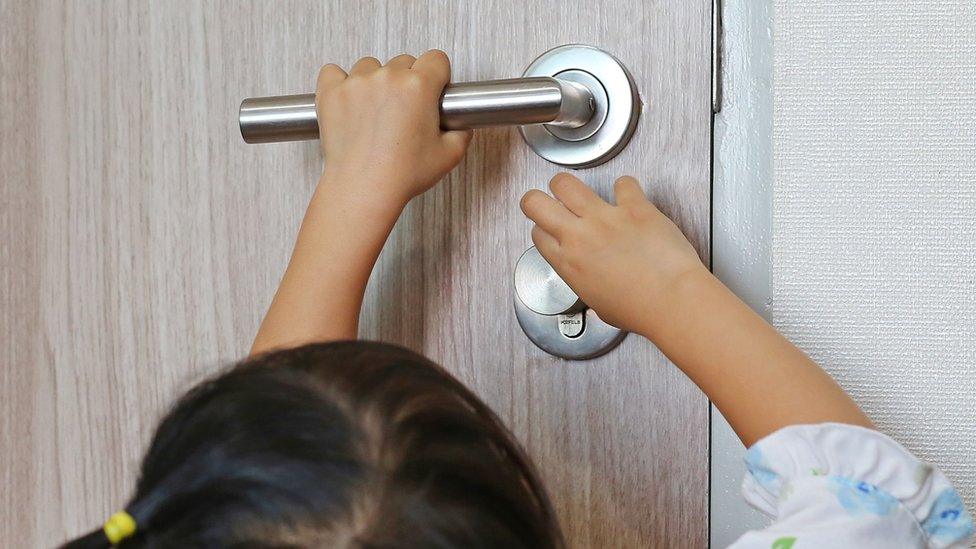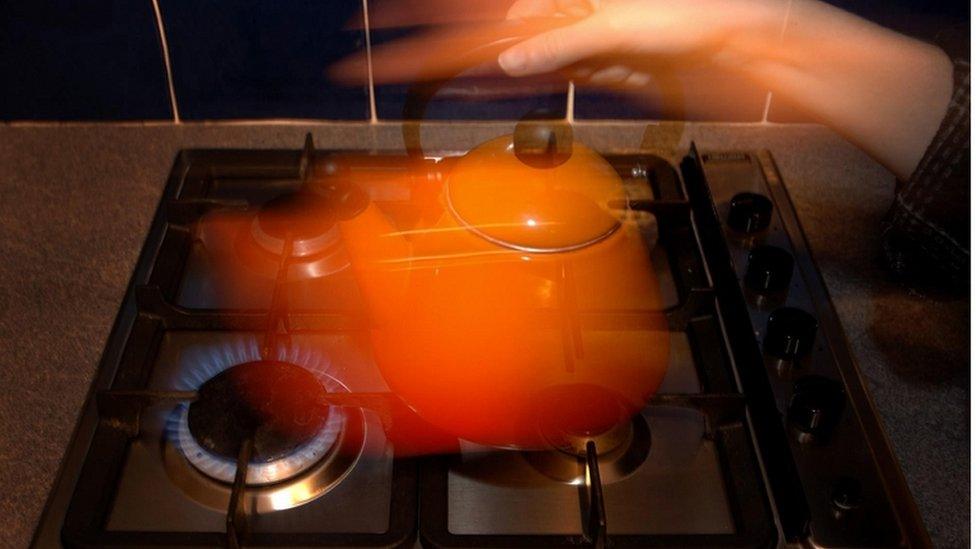Children's door-crush finger injuries 'can be lifelong'
- Published

Children can seriously injure their fingers in doors
Children and toddlers whose fingers are crushed by closing doors can end up with lifelong problems, plastic surgeons are warning.
The British Association of Plastic and Reconstructive Surgeons (Bapras) said the injuries in some cases could lead to amputation and long-term pain.
They said parents should fit safety catches on all suitable doors at home.
About 30,000 children trap their fingers in doors each year and more than 1,500 of them need surgery.
The figures are from the Royal Society for the Prevention of Accidents.
It says more than two million children under 15 have accidents in and around the home every year and require emergency medical care.
According to Bapras, self-shutting fire safety doors, car doors and hinges are the top three causes of finger and hand injuries in children.
Hinge protectors
It recommends putting small C-shaped devices made of foam or rubber over doors to prevent them slamming - but these are not suitable for fire doors because they prevent the door from closing.
Hinge protectors can also be fitted on most doors.
Bapras spokeswoman Anna De Leo, a plastic surgeon at the Royal Free Hospital, London, said finger injuries were not a joke.
"The injuries are so serious that the patient would need to undergo a clinic appointment, an X-ray, day surgery, a follow-up nurse appointment and possibly physiotherapy."
And she said the effects could be long-term.
"It's easy to underestimate how important your hands are to doing everyday tasks.
"Injuries to fingers and hands mean tying your shoelaces, typing, holding a mobile phone or eating become a lot more challenging.
"And this is nothing compared to the impact of a finger amputation."
Ms De Leo said people in that situation could also experience elbow pain, migraines and even depression.
"Fingertip injury alone can result in 20% loss of hand strength and can prevent people from pursuing their chosen career," she added.
'No finger tip'
In the late 1960s when Jane was about three years old, her older brother was asked to lay the table.
"When he tried to extend the gate leg table, the tip of my right hand ring finger was severed," she says.
"Mom picked up the tip and I went to the hospital.
"Apparently I had nine stitches but it didn't reattach so now I no longer have a tip on that finger."
Colin was a toddler when he pulled himself up using the door frame while my friend tried to close the door.
"The door wouldn't close (because my thumb was in the way) so my friend kept on pushing the door.
"It took my Mum a while to work out where I was making all the noise from," he says.
The doctors wanted to amputate the top half of his thumb but his parents persuaded them not to.
Now he has a misshapen but fully-functional tenth digit.
"People only notice it's misshapen if I point it out, which I very rarely do."

Accidents that happen in the home
Falls from height and burns and scalding result in the most severe injuries
Most accidents tend to happen in the kitchen and on the stairs
Children under four years old are most prone to accidents
Boys are more likely to hurt themselves than girls
Poisoning, choking, suffocating, glass-related incidents and strangulation are also common
- Published21 November 2015

- Published6 August 2017
